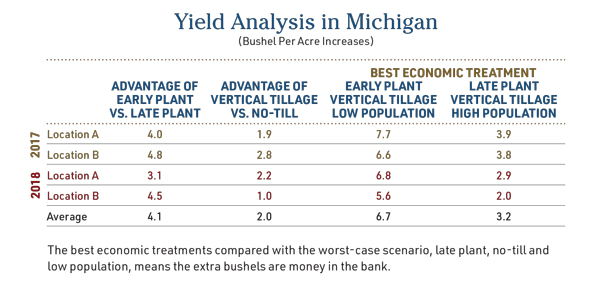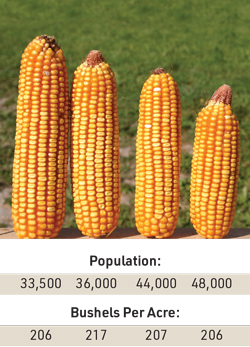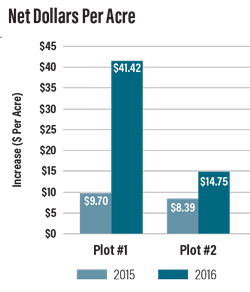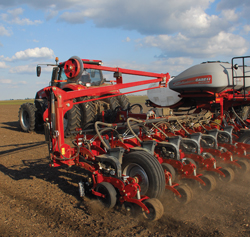How do your hybrids flex?
© Farm Journal
TAGS: Marketing, Overseas
December 18, 2014
For 27 years, Farm Journal Field Agronomists Ken Ferrie and Missy Bauer have studied numerous aspects of planting and seed. Take what they’ve learned to your fields.
How Do Your Hybrids Flex?
- When selecting hybrids and planting population, consider rows around (girth), ear length and depth of kernels.
- Full-flex hybrids flex all three ways, determinate flex only in depth of kernels, and semi-flex and semi-determinate are in between.
- Full-flex hybrids can produce high yields at low populations, but they can’t handle stress as well as determinate hybrids.
- Determinate hybrids maintain kernel count; the size of the ear gets smaller but the number of kernels on the ear stays the same.
- Leaf structure affects plants’ ability to capture sunlight.
- Understand how to place hybrids before transitioning to variable rate.
To learn more about the three Ps—placement, population and plant greenness—of hybrid selection and management, visit www.AgWeb.com/understand-ear-flex
 The Benefits of Treating Soybeans
The Benefits of Treating Soybeans
- Even in two years of no visual signs of SDS and low levels of SCN, ILeVo plus a fungicide/insecticide seed treatment combination outperformed the fungicide/insecticide-alone seed treatment in yield and ROI.
- There’s some improvement in the quality of the stands, but most of the yield increase is coming from the stay-green effect — healthier soybean plants stay greener longer, which supports pod development and bean fill.
- Try treating a third of your soybean seed and evaluate the results. Consider treating early planted beans because they’re usually the highest yielding and most at risk to disease and pests.
For more research results and insight, visit www.AgWeb.com/treat-against-SDS-SCN
 Plant at High Speeds
Plant at High Speeds
- Keeping the planter in full contact with the ground is key to achieving uniform depth.
- Shallow-planted seeds in dry soils might not imbibe water and will germinate later.
- Shallow-planted seeds in soils with adequate moisture might emerge sooner, but could develop as rootless corn.
- Good ride and uniform seed depth dictate uniform emergence and growth.
- Row unit bounce can cause uneven ear and plant height.
Learn more about high-speed planting at different speeds and pounds of downforce at www.AgWeb.com/high-speed-planting
An Early Start Pays Off For Soybeans
- Test Plots see an average increase of 3 bu. to 7 bu. per acre when planting in late April/early May versus after May 15.
- Early soybean planting dates allow for lower average plant populations.
- Late planting dates call for an increase in population as well as vertical tillage to improve early growth and canopy closure.
- Soybeans are less sensitive to emergence problems.
For more details on how planting date, population and tillage systems impact yield results, visit www.AgWeb.com/start-soybeans-early

Read original article: https://cattlemensharrison.com/for-27-years-farm-journal-field-agronomists-ken-ferrie-and-missy-baue/
By: Agweb



 The Benefits of Treating Soybeans
The Benefits of Treating Soybeans Plant at High Speeds
Plant at High Speeds